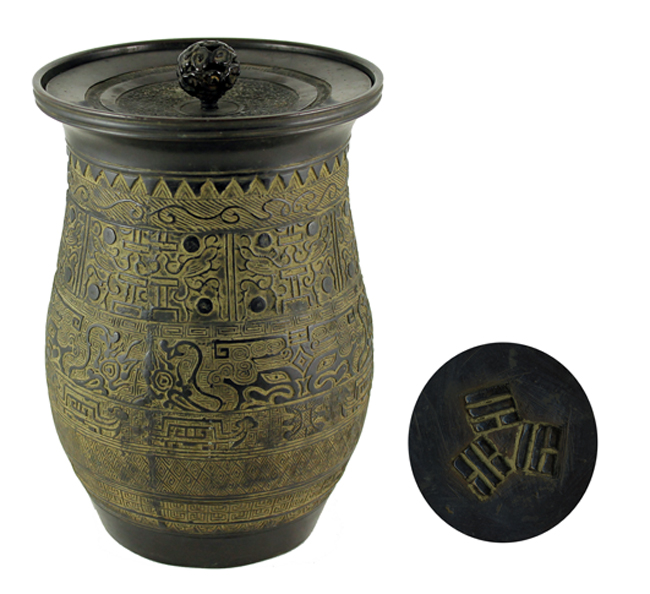
Among the many Asian artifacts in the Longfellow House collections are Chinese pieces purchased by Charles Longfellow. One of them is this bronze jar or urn, likely obtained by Charley during his travels in China in 1873 or 1891.
At first glance, the jar appears to have connections to bronzes made during the period of the Western Zhou dynasty, between 1046 and 771 BC. One possible clue is the use of the taotie, a type of design often used to decorate Zhou period bronzes. The taotie consists of a bilaterally symmetrical mask featuring large eyes and no lower jaw. Other common features include stylized horns, eyebrows or fang-like teeth. Taotie designs on this piece can be seen in one of the two horizontal bands of decoration that circle the jar at its widest point. Taotie is often translated as "glutton", but the word did not come into use until centuries after the end of the Zhou dynasty, so the designs' exact meaning is still unknown.
In addition to the taotie designs, on the bottom of the vase are three trigrams (pictured above), symbols created by a series of three broken or unbroken lines. The trigrams on the bottom of this bronze seem to correspond to the ideas of wind, water, and lake. Trigram designs are part of a system of divination used in the I-Ching, or Book of Changes, an ancient Chinese system of prediction or fortune-telling that according to some sources is as much as four thousand years old.
So do the taotie designs and trigrams that adorn this piece mean Charley Longfellow bought a bronze jar that is thousands of years old? Probably not. Western Zhou bronzes have been reproduced, or faked, for hundreds of years as Chinese dynasties that followed the Zhou created many pieces based on the same designs. The condition and craftsmanship of this piece indicate it was a fairly recent or even contemporary replica when Longfellow got it. Even so, the fierce taotie designs and the associated mysticism of the trigram symbols would have likely appealed to Charley, and perhaps to other family members back in Cambridge.
